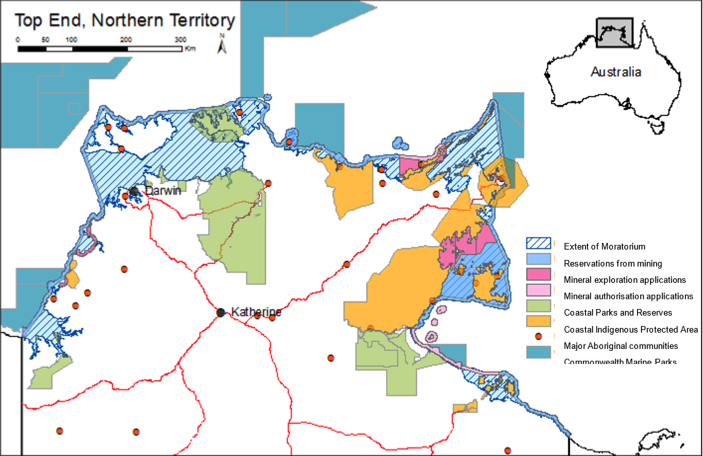Seabed mining review underway for Northern Territory’s coastal waters

Pic: Tyler Stableford / Stone via Getty Images
- Mining industry interest in NT’s coastal seabed could rise if ban is lifted next year
- EPA report examines environmental impacts, risks and uncertainties
- Seabed has bauxite, manganese and tin deposits which are extensions of onshore deposits
A review has begun of the Northern Territory’s ban on coastal seabed mining which is due to expire in March 2021.
Seabed mining is aimed at extending the ability to recover minerals from the Earth’s crust that are under the sea and only recently has the practice been technically feasible.
The technique has been used in Indonesia’s tin industry, for diamond extraction in Namibia, and gold mining off Alaska’s coast.
The industry is now focusing on deep sea exploration and extraction technologies for minerals that occur at depths of 1,500 to 4,500m such as manganese and cobalt rich crusts.
The Northern Territory’s ban on the controversial practice was put in place in 2012, in response to community protests. The moratorium was twice extended in 2015 and 2018 for additional three-year terms.
Some exploration activity was proposed for the seabed near Groote Eylandt in 2012 but was halted by opposition from Aboriginal organisations.
About 14 applications currently exist for exploration activity in the Northern Territory’s coastal waters, according to the NT Environment Protection Authority.
Large swathes of NT coastline is covered by the ban on minerals exploration

Seabed mining impact review published by the NT EPA
Ahead of the territory government’s decision on whether or not to lift the current moratorium, the NT EPA has published a report studying the issue.
People and organisations are invited to comment on this by November 9.
“The review describes that range of potential environmental impacts, risks and uncertainties and the management of measures that could be used to manage impacts from seabed mining on the Territory’s coastal waters,” NT EPA chairman, Dr Paul Vogel he told Stockhead.
“There is still gaps in the knowledge of the impacts of seabed mining.”
Dredging and scraping
Likely methods of seabed mining for the Territory’s shallow coastal waters would typically involve dredges scraping or excavating the seabed.
The Territory’s coastal seabed contains minerals such as gold, diamonds, mineral sands, rare earths, salt, phosphate and bauxite that are extensions of onshore resources and these are detailed in the EPA report.
Mineral rich areas include diamonds in the Gulf of Carpentaria, tin and tantalum in Bynoe Harbour, phosphate, bauxite and manganese at spots along the north east coast, and manganese near Groote Eylandt.
The Northern Territory’s government is expected to state its position on seabed mining in its coastal waters before March 2021.
Related Topics
UNLOCK INSIGHTS
Discover the untold stories of emerging ASX stocks.
Daily news and expert analysis, it's free to subscribe.
By proceeding, you confirm you understand that we handle personal information in accordance with our Privacy Policy.








